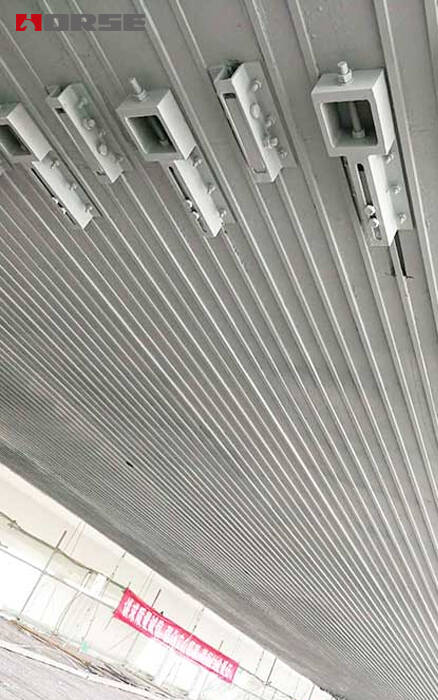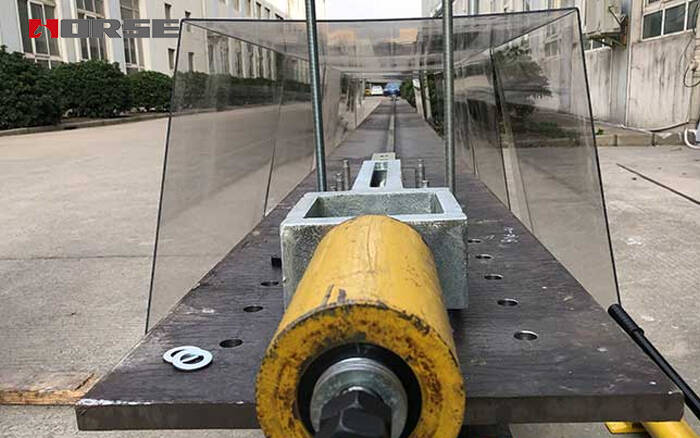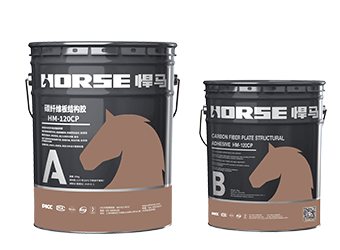Solutions
Horse Construction offers full range of structural strengthening materials with technical supports, documentation supports, products supports, project supports.
Application Status of Prestressed Carbon Fiber Plate Reinforcement System in Highway Bridges

In recent years, a mode of strengthening the bridge bottom by transversely tensioning prestressed carbon fiber plates has emerged, which can improve the overall rigidity and load-bearing capacity of the bridge slab. With the rapid development of prestressed carbon fiber plate reinforcement technology, there are more and more problems in its application. Whether the prestressed carbon fiber plate reinforcement technology can truly achieve the expected good reinforcement effect depends on whether its reinforcement system is perfect and reasonable. Prestressed carbon fiber plate reinforcement technology for highway bridges has received more and more attention in recent years, and the application cases across the country have increased year by year. This is of great significance to the development of bridge reinforcement technology.
Overview of Tension Anchor System
The anchor system is the general term for the component system that organically combines the preloaded carbon fiber plate with the reinforcement object (concrete beam), and is the key device for the connection and force transmission between the carbon fiber plate and the reinforced concrete beam. At present, the anchoring system in engineering applications is generally divided into two parts: anchors and anchoring devices. The anchor is a component used to clamp the prestressed carbon fiber plate; the anchoring device is a component that fixes the anchor to the reinforced concrete beam.
1.1 Overview of anchors
In the prestressed carbon fiber plate reinforcement construction, the selection of anchors (the end structure of the carbon fiber plate) is very important, which directly determines whether the external prestress can be successfully applied. Based on the characteristics of the anchor, it must have high strength and be able to withstand the tensile stress of a large enough tonnage. At the same time, it can effectively clamp the carbon fiber plate to ensure that the carbon fiber plate does not appear peeling damage. At present, in practical engineering applications, carbon fiber plate anchors are generally divided into extrusion anchors and clip anchors according to the clamping method. Among them, extrusion anchors mainly include pier anchors, flat anchors and wave anchors.
(1) Wave anchors.
Wave anchors are a typical representative of squeeze anchors. The anchor is mainly constructed with a lower steel plate, an upper steel plate and an anchor bolt. The principle is to effectively clamp the carbon plate through friction (produced by the squeezing force provided by the bolt) and adhesive force (the colloid between the carbon core plate and the upper and lower steel plates). Therefore, the anchorage does not produce a concentrated effect of transverse shearing force, and has good applicability to carbon fiber sheets with poor shear resistance. In addition, this kind of corrugated anchor cleverly changes the inner side of the upper and lower steel plates to a corrugated thread design, and ensures that the tooth patterns of the upper and lower steel plates are consistent. Effectively enlarge the action area of carbon fiber sheet and steel plate, and improve the anchoring effect
(2) Clip anchors.
The clip anchor is mainly constructed with upper and lower clips and anchor plates. The principle is mainly based on the relevant technology of anchoring the clip after the steel strand is stretched. That is, with the help of the tension of the carbon fiber plate, the clamping piece is effectively wedged into the corresponding anchor plate, and the anchor plate generates enough positive pressure to provide corresponding friction to realize the anchoring effect. It is worth noting that the anchor cleverly utilizes the wedge-shaped structure, so that the positive pressure of the clip in the transverse direction is gradually increased while the tensile force is increased, thereby providing sufficient friction against the carbon fiber plate. In addition, through further analysis of the clip anchor, this kind of clip anchor is quite different from other anchors in terms of construction. That is, this kind of anchor needs to apply a certain pre-tightening force before acting to ensure the effective wedging of the upper and lower clips. In order to ensure that the follow-up wedging action will generate sufficient friction while increasing the tensile force to resist the relative sliding of the carbon fiber sheet.

(3) Comparative analysis.
By comparing the anchoring performance, durability, and construction difficulty of the squeeze wave anchorage and the clip anchorage, the two mainstream anchorages have their own advantages:
1) In terms of force, wave anchors and clip anchors have good anchoring performance;
2) Both have good durability in terms of safety and durability;
3) In terms of structure and construction convenience, wave anchors have more advantages, simple structure, convenient construction, and more suitable for rapid reinforcement construction.
1.2 Anchoring device
The anchoring device is a component that effectively fixes the carbon fiber plate on the strengthened test piece, and it mainly transfers the tensile stress to the reinforced bridge stably through the anchoring device. That is, the anchoring device needs to have enough strength to bear the large tonnage tensile force, and structural stability and safety are also very important.
Long-term engineering practice has proved that the size of the external prestressed carbon fiber plate anchoring device of the plate beam is allowed to be kept in a small range, mainly because the tensile stress is generally not large and the floor space is relatively limited in this case. In actual operation, the specific size of the anchoring device is often checked in reverse according to the size of the tensile tonnage. In terms of specific methods, a few anchor bolts and a square bottom steel plate can be equipped, and steel ribs can be designed between the anchoring devices to increase the bearing capacity and ensure the effective transmission of tensile force.
You can find anything here you are in need of, have a trust trying on these products, you will find the big difference after that.

High strength carbon fiber reinforced polymer (CFRP) strip / laminate / plate for structural strengthening and concrete repair

Prestressed carbon fiber reinforced polymer(CFRP) plate for slab, beam strengthening to increase stiffness, reduce distortion and deflection of members, reduce the cracks, avoid and stop cracking.

High strength carbon fiber reinforced polymer plate adhesive for applying CFRP laminate/strip/plate on the structural members